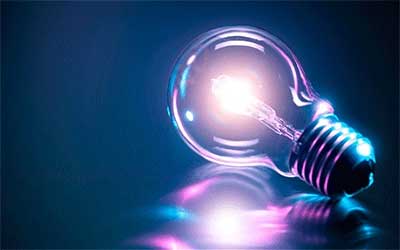Daily-current-affairs
/
28 Oct 2020
Electricity Access in India and Benchmarking Distribution Utilities : Daily Current Affairs

Electricity Access in India and Benchmarking Distribution
Utilities
IN NEWS ?
- NITI Aayog, Ministry of Power, Rockefeller Foundation, and Smart Power India launched the ‘Electricity Access in India
and Benchmarking Distribution Utilities’ report.
ABOUT
- Based on a primary survey conducted across 10 states––representing about 65% of the total rural population of India
and with a sample size of more than 25,000, including households, commercial enterprises and institutions––the
report assesses 25 distribution utilities.
- Aimed at capturing insights from both the demand (electricity customers) as well as supply side (electricity
distribution utilities), the report seeks to:
- Evaluate the status of electricity access in India across these states and distribution utilities along all dimensions that constitute meaningful access.
- Benchmark utilities’ capacity to provide electricity access and identify the drivers of sustainable access.
- Develop recommendations for enhancing sustainable electricity access
KEY FINDINGS OF THE REPORT:
- As much as 92% of customers reported the overall availability of electricity infrastructure within 50 metres of their
premises; however, not all have connections, the primary reason being the distance of households from the nearest
pole.
- Overall, 87% of the surveyed customers have access to grid-based electricity. The remaining 13% either use non-grid
sources or don’t use any electricity at all.
- The hours of supply have improved significantly across the customer categories to nearly 17 hours per day.
- Nearly 85% of customers reported to have a metered electricity connection.
- Access to electricity is observed in 83% of household customers.
- A satisfaction index was created to assess the overall satisfaction level of customers with utility services. The study
suggested that a total of 66% of those surveyed were satisfied––74% of customers in urban areas and 60% in rural
areas.
CONCLUSION
- The report underlines some best practices adopted by the better-performing electricity distribution utilities in India
and provides key recommendations to enhance sustainable electricity access. The data from the survey provides
evidence that the infrastructure of providing electricity across sectors has improved over time. It also shows that
reforms undertaken by the Government have been appreciated by the stakeholders.
- The report highlights the benefits of government-led schemes such as Pradhan Mantri Sahaj Bijli Har Ghar Yojana and
Deen Dayal Upadhyaya Gram Jyoti Yojana, which have been well received in rural as well as urban areas.
- The Government of India has been working tirelessly to improve the health of public electricity distribution utilities.
However, certain bottlenecks––such as regulated tariffs and inadequate infrastructure––continue to hinder efforts in
providing 24x7 electricity to all.







